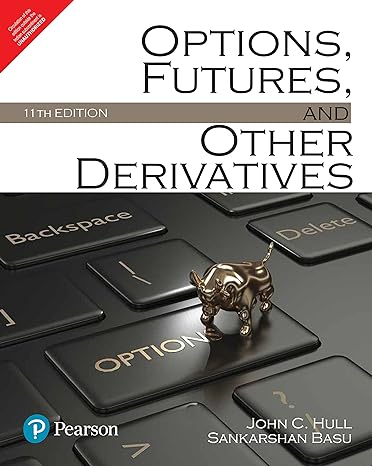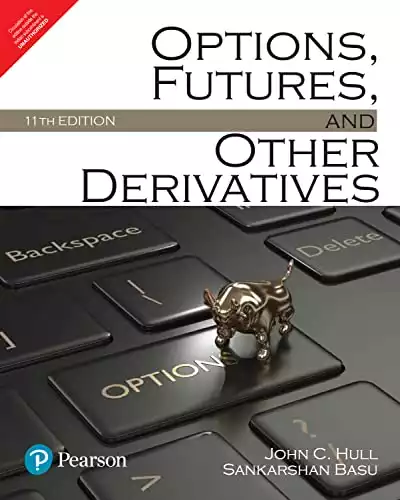Overview : Options, Futures, and Other Derivatives
- Book Title: Options, Futures, and Other Derivatives
- Author: John C. Hull
- Publication Date: (Provide the most recent edition's date)
- price: $36.20
- Pages: 880
Overview of the Book
John C. Hull is a Professor of Derivatives and Risk Management at the Rotman School of Management, University of Toronto. He is a respected researcher in quantitative finance and co-developed the Hull-White model. His book "Options, Futures, and Other Derivatives" is widely used by market practitioners.
Introduction
In the ever-evolving world of finance, few books have stood the test of time as well as John C. Hull's "Options, Futures, and Other Derivatives." Now in its tenth edition, this seminal work continues to be an indispensable resource for students, practitioners, and anyone keen on mastering the intricacies of financial derivatives. As markets become increasingly complex and interconnected, understanding these instruments is crucial for successful investing and risk management.
Book Summary
Hull's magnum opus offers a comprehensive exploration of derivative markets, covering a wide range of instruments including options, futures, swaps, and other related products. The book's structure guides readers from fundamental concepts to advanced topics like stochastic calculus and the Black-Scholes-Merton model, ensuring a cohesive learning experience regardless of the reader's prior knowledge.
"The pricing of options and other derivatives depends crucially on the volatility of the underlying asset." - John C. Hull
This quote encapsulates one of the core principles discussed in the book, highlighting the importance of volatility in derivative pricing – a concept crucial for both personal investing and professional trading strategies.
Analysis of Themes
Theoretical Foundations and Practical Applications
Hull masterfully balances theoretical rigor with practical insights, making the book relevant for both academic study and real-world application. The text delves into the mathematical models behind derivative pricing while also exploring their use in financial markets. This approach is particularly valuable for those looking to bridge the gap between academic finance and market practices.
Risk Management and Market Trends
In light of recent market volatility and the growing importance of risk management, Hull's coverage of these topics is particularly timely. The book addresses contemporary issues such as the impact of the 2008 financial crisis on derivatives trading and regulation, offering valuable insights into current market trends and practices.
Technological Advancements in Finance
While not the primary focus, Hull touches upon the influence of technology on derivatives markets. This is an area that could be expanded in future editions, given the increasing role of algorithmic trading and financial technology in shaping market dynamics.
Writing Style
Despite the complexity of the subject matter, Hull's writing style is remarkably accessible. He employs clear explanations and step-by-step calculations that make intricate concepts more approachable. The book is replete with diagrams, charts, and examples that visually illustrate key ideas, aiding in comprehension.
Strengths and Weaknesses
Strengths:
- Comprehensive coverage of derivatives markets
- Balance of theoretical and practical knowledge
- Clear explanations of complex mathematical concepts
- Inclusion of recent market developments and regulations
- Valuable end-of-chapter problems and case studies
Weaknesses:
- May be overwhelming for beginners due to its depth
- Some emerging topics could benefit from more detailed coverage
- Heavy mathematical focus might challenge readers without a strong quantitative background
Comparison to Other Works
When compared to other texts in the field, such as "Financial Derivatives" by Robert W. Kolb and James A. Overdahl, Hull's book stands out for its more comprehensive coverage and stronger mathematical foundation. However, for those seeking a more introductory text, "An Introduction to Derivatives and Risk Management" by Don M. Chance and Robert Brooks might be more suitable.
In the broader context of financial literature, Hull's work complements general investing books like "A Random Walk Down Wall Street" by Burton Malkiel by providing deep insights into specific financial instruments that play a crucial role in modern portfolio management and market analysis.
Highlights from Option, Futures and Other Derivatives
- Derivatives explained: Covers options, futures, and swaps as financial instruments.
- Hedging strategies: Teaches how derivatives can manage financial risk.
- Pricing models: Discusses methods like Black-Scholes for valuing options.
- Market behavior: Analyzes the dynamics of derivatives markets and pricing influences.
- Arbitrage opportunities: Identifies risk-free profit potential in derivative markets.
- Risk management: Stresses the importance of using derivatives to protect against price fluctuations.
- Financial engineering: Introduces concepts of creating customized derivative products for specific needs.
Conclusion
"Options, Futures, and Other Derivatives" remains a cornerstone text in financial education. Its blend of theoretical depth and practical application makes it an essential resource for anyone serious about understanding derivatives markets. Whether you're a student of finance, a professional trader, or an individual investor looking to expand your knowledge, Hull's work provides the tools necessary to navigate the complex world of financial derivatives with confidence.
In an era where personal finance and investing are becoming increasingly important, understanding these advanced financial instruments can give readers a significant edge in managing their portfolios and assessing market risks. While the book's focus is on derivatives, the principles it teaches are applicable to broader aspects of investing and financial decision-making.
For those ready to dive deep into the world of financial derivatives and enhance their understanding of modern markets, "Options, Futures, and Other Derivatives" is an invaluable resource that stands the test of time.





